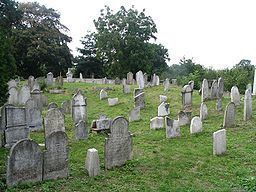- summer (DST) CEST (UTC+2) Area 25.79 km² | Elevation 220 m Local time Monday 4:34 PM | |
 | ||
Weather 14°C, Wind NW at 13 km/h, 36% Humidity | ||
Osoblaha ( [ˈosoblaɦa]; German: Hotzenplotz; Yiddish: האָצ׳פּלאָץ (Hotz'plotz, Hots'plots); Polish: Osobłoga) is a village in the Bruntál District of Czech Silesia in the Czech Republic in Osoblaha Hook. From 1938 to 1945 it was one of the municipalities in Sudetenland. The village is named after the Osoblaha River of the same name.
Contents
Map of 793 99 Osoblaha, Czechia
Osoblaha municipality is situated in the northern part of the microregion being the final stop of the narrow-gauge railway. The first mention of Osoblaha dates back to 1233 with gaining its town rights in 1251 which set principles to its economical development. However, small-town prosperity (Osoblaha had a population of nearly 5000 before World War II) was halted by World War II. Although Osoblaha was the first town in the Czech lands to be liberated by Soviet troops on 22 March 1945, the bitter fighting caused the destruction of 90% of all buildings. The German name of the municipality is "Hotzenplotz"; it served the German writer Otfried Preussler for naming his famous fairy-tale character of "Hotzenplotz the Robber". Currently, Osoblaha has a population of 1133.
According to the Austrian census of 1910 the town had 2,853 inhabitants, 2,759 of whom had permanent residence there. Census asked people for their native language, 2,754 (99.8%) were German-speaking. Jews were not allowed to declare Yiddish, most of them thus declared the German language as their native. Most populous religious groups were Roman Catholics with 2,779 (97.4%), followed by Jews with 58 (2%).
The most important monument in the centre of the municipality is the Jewish Cemetery. The cemetery is a unique landmark for Czech conditions due to its tombstones character ("macev") which are of the "Silesian type". This type of tombstones is typical for a number and size of used ornaments where the oldest tombstone is from 1694. In the town it is possible to find remains of former town fortifications from the 16th century. From the other Osoblaha monuments can be named the St. Nicholas Church behind the town towards Studnice village which is together with the empire fountain on the square one of the last monuments remembering former architectural town's appearance.
In the 1870s the owners of sugar refinery in Osoblaha were looking for a railway connection of their town. From financial point of view, the best alternative was a connection to the railway network in neighbouring Prussia. However, the government in Vienna refused it on political and military grounds. On 14. December 1898 a narrow gauge railway line from Třemešná was opened.
